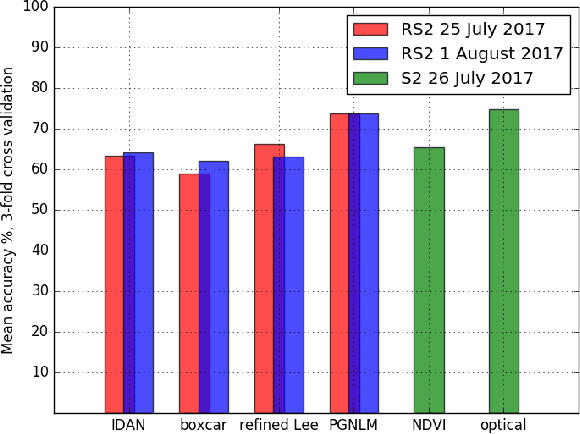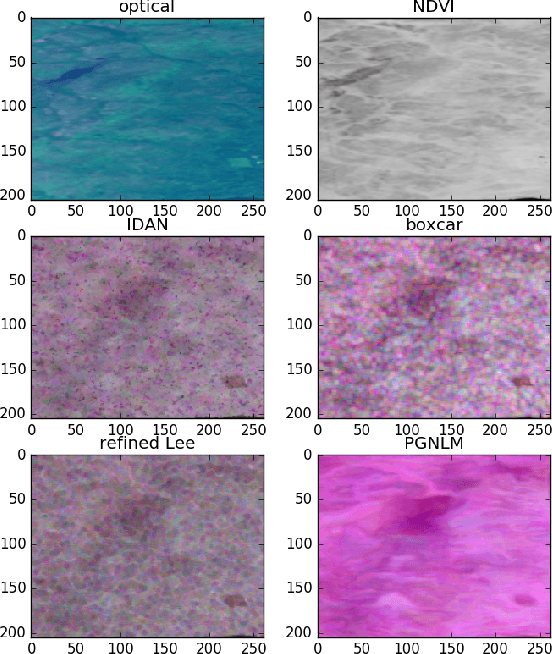Polarimetric Guided Nonlocal Means Covariance Matrix Estimation for Defoliation Mapping
Paper and Code
Jan 24, 2020

In this study we investigate the potential for using Synthetic Aperture Radar (SAR) data to provide high resolution defoliation and regrowth mapping of trees in the tundra-forest ecotone. Using in situ measurements collected in 2017 we calculated the proportion of both live and defoliated tree crown for 165 $10 m \times 10 m$ ground plots along six transects. Quad-polarimetric SAR data from RADARSAT-2 was collected from the same area, and the complex multilook polarimetric covariance matrix was calculated using a novel extension of guided nonlocal means speckle filtering. The nonlocal approach allows us to preserve the high spatial resolution of single-look complex data, which is essential for accurate mapping of the sparsely scattered trees in the study area. Using a standard random forest classification algorithm, our filtering results in a $73.8 \%$ classification accuracy, higher than traditional speckle filtering methods, and on par with the classification accuracy based on optical data.
 Add to Chrome
Add to Chrome Add to Firefox
Add to Firefox Add to Edge
Add to Edge